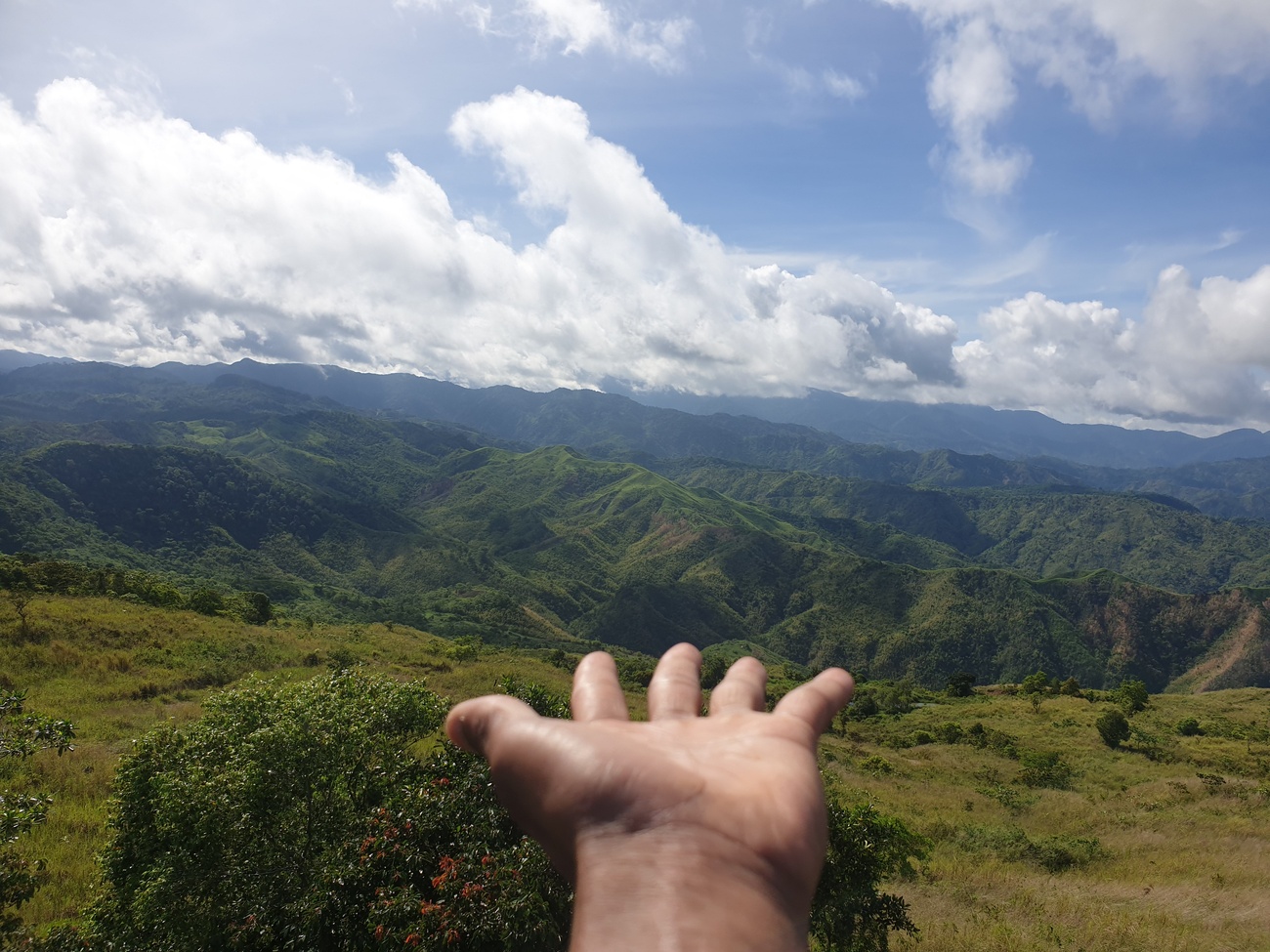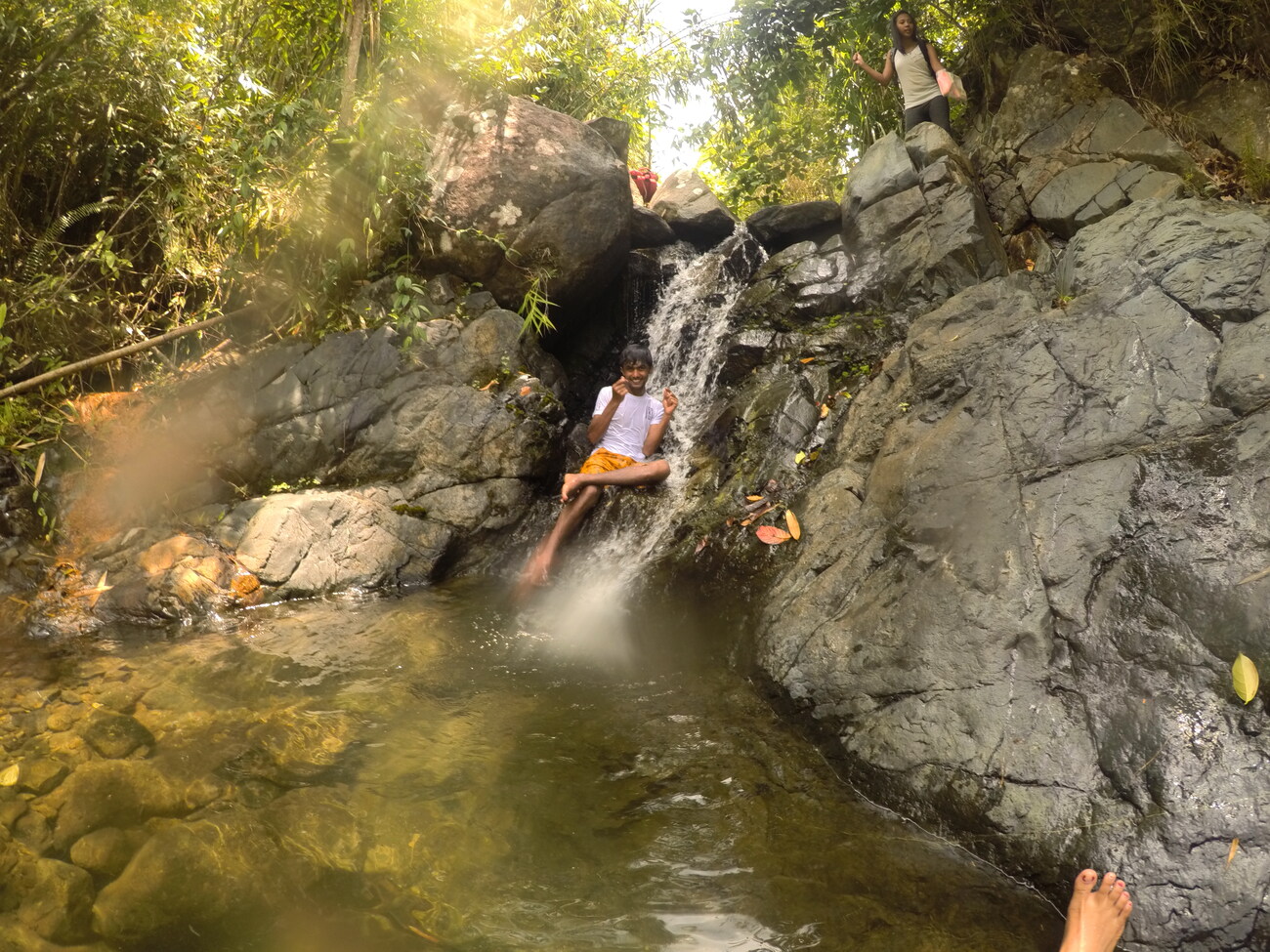A Journey to Mount Balagbag
Having spent years living in South Korea, a country with over 65% of its land covered in hills and mountains, I’ve come to appreciate the beauty of elevated landscapes. However, one mountain outside of Korea that often comes to mind is Mount Balagbag in the Philippines. Known for its rolling trails, scenic views, and golden sunsets, Mount Balagbag offers a peaceful retreat for those looking to experience nature’s tranquility without an overly strenuous climb. Its gentle slopes and breathtaking views of the Sierra Madre mountain range make it a favorite among both locals and visiting hikers.
As picturesque as Korean mountains and Mount Balagbag are, they’ve never quite evoked the connection I feel when I think of “Bandarban,” the iconic hill district of Bangladesh. While I’ve yet to set foot in Bandarban myself, its raw and untamed beauty, often celebrated in photos and stories, holds a special place in my imagination. Just as Mount Balagbag embodies the charm of nature in the Philippines, I imagine Bandarban would offer a similarly soul-stirring experience, connecting me deeply to the untamed wilderness that I long to explore.

Korean mountains, though visually striking, often lack the rugged charm of true wilderness. Most trails here are modified for convenience—complete with wooden staircases, benches, and even surveillance cameras. While these facilities cater to urban hikers, they strip away the unpolished allure of nature. Waterfalls are often inaccessible, and strict regulations discourage spontaneous exploration. This sterilized version of nature feels far removed from the rugged, adventurous terrain I associate with Bandarban.

So, imagine my surprise when I discovered a slice of that untamed wilderness thousands of miles away in the Philippines. On the final day of my five-day tour, I visited Mount Balagbag, a relatively lesser-known peak located about two hours from Manila. It was an experience that transported me straight to the hills of Bandarban—or at least what I imagine Bandarban to be.
Getting to Mount Balagbag: The Step-by-Step Guide
1. From Manila to Tungko
The journey began early in the morning at 5:00 AM. I left my hostel in Cubao, a bustling district of Manila, and headed for the bus station. The streets of Cubao were alive with activity, much like Dhaka in the early morning. Street vendors were setting up shop, and the aroma of freshly brewed coffee and roadside snacks filled the air.
I caught the first bus to Tungko, a key transportation hub about an hour’s ride away. The fare was a mere 58 PHP, and the ride itself was smooth. Unlike the chaos of Dhaka’s buses, the Filipino bus system felt relatively organized, though the atmosphere still had that familiar South Asian charm.
2. From Tungko to Licao Licao
Upon reaching Tungko, I disembarked and sought out a jeepney to Licao Licao, the next leg of my journey. Jeepneys are a quintessential part of Filipino transportation—brightly painted, open-air vehicles that exude a unique cultural vibe. The 30-minute ride to Licao Licao cost 29 PHP.

Here’s a tip: Licao Licao doesn’t appear on Google Maps as a marked destination. To avoid confusion, it’s best to ask locals for directions. The journey took me along winding roads lined with small shops and friendly locals who greeted me with warm smiles, reminiscent of the hospitality I associate with Bandarban’s tribal communities.
3. From Licao Licao to Balagbag Health Care
At Licao Licao, I registered my name for a nominal fee of 5 PHP before hopping onto a tricycle bound for Mount Balagbag Health Care, the trailhead. The tricycle ride was short but bumpy, covering a distance of about 20 minutes for just 20 PHP.
This final stretch marked the transition from bustling towns to the tranquil embrace of nature. The road became narrower, flanked by dense greenery and occasional glimpses of small tribal huts tucked away in the hills.
Hiking Mount Balagbag: The Adventure Unfolds
The Main Trail For Mount Balagbag
The hike began at Mount Balagbag Health Care, where I paid another registration fee of 20 PHP. The trail to the summit is considered beginner-friendly, making it accessible to most travelers. It takes about an hour to reach the peak, and the path is wide, well-trodden, and surrounded by lush vegetation.

As I ascended, the trail unfolded like a living postcard. Birds chirped overhead, and the gentle rustle of leaves created a soothing symphony. Along the way, I passed by small tribal villages, their bamboo huts blending harmoniously with the landscape. The sight of locals carrying out their daily routines—children playing by the roadside, women tending to small gardens—added a human touch to the otherwise pristine wilderness.
At several points, I paused to catch my breath and take in the scenery. The trail offers numerous natural viewpoints, where you can sit and marvel at the sprawling hills and valleys below. Unlike the heavily commercialized trails of South Korea, Mount Balagbag felt authentic, untouched, and alive.

Veering Off the Beaten Path
Halfway to the summit, I encountered a group of three young locals who mentioned a hidden waterfall nearby. Intrigued, I decided to join them, venturing off the main trail into uncharted territory.
This part of the hike was a true adventure. The path was narrow, rocky, and at times challenging to navigate. We clambered over fallen logs, crossed small streams, and pushed through dense undergrowth, guided only by instinct and the faint sound of rushing water.

The detour added about two hours to our journey, but it was worth every second. Although we initially struggled to find the waterfall, the process of exploring this untamed landscape was exhilarating.
The Summit Experience of Mount Balagbag
Finally, we reached the summit of Mount Balagbag, and the view was nothing short of spectacular. Standing there, I felt a profound connection to the landscape—a feeling I’d only ever imagined experiencing in Bandarban.
The summit offers panoramic views of rolling green hills, distant cityscapes, and tiny villages nestled in the valleys below. The air was crisp and carried the faint scent of wildflowers, invigorating my senses.
At the peak, there’s a small, privately managed swimming pool where you can cool off for 50 PHP. The idea of swimming at the top of a mountain struck me as both quirky and delightful, so I couldn’t resist dipping my feet into the cool water.

Nearby, small makeshift stalls offered snacks and refreshments. I grabbed a locally made rice cake and a cup of warm coffee, enjoying the simple pleasure of eating while surrounded by such breathtaking beauty.
Discovering the Hidden Waterfall in Mount balagbag
Determined to locate the elusive waterfall, we sought guidance from a local villager at the summit. With their help, we finally found it—hidden deep within the forest, a cascading stream of crystal-clear water tumbling down moss-covered rocks. The waterfall was a serene retreat, far removed from the bustling tourist spots of Manila. We spent hours there, splashing in the cool water and soaking in the tranquility. Unlike the fenced-off waterfalls I’d seen in Korea, this one felt wild and free, untouched by commercialization.

Tips for an Enriching Experience
- Start Early: The trail is best explored in the morning when the weather is cool and the views are at their clearest.
- Pack Smart: Carry plenty of water, snacks, and sunscreen. The sun can be harsh, especially during the final stretch to the summit.
- Respect Local Culture: The tribal communities on the mountain are welcoming, but it’s important to respect their privacy and traditions. Always ask for permission before taking photos of people or their homes.
- Leave No Trace: Bring a small bag for your trash and avoid littering. Let’s help preserve the beauty of this natural wonder.
- Be Prepared for Detours: If you’re feeling adventurous, don’t hesitate to explore the lesser-known paths. Just make sure to ask locals for directions to avoid getting lost.
A Detailed Cost Breakdown
| Expense | Cost (PHP) |
|---|---|
| Bus to Tungko (Round Trip) | 116 |
| Jeepney to Licao Licao (Round Trip) | 58 |
| Tricycle to Trailhead (Round Trip) | 40 |
| Registration Fees | 45 |
| Snacks and Drinks | 70 |
| Swimming Pool Access | 50 |
| Miscellaneous | 50 |
| Total | 429 PHP (~7.50 USD) |
Exploring Mount Balagbag was an unforgettable experience. From the rugged trails and tribal villages to the hidden waterfall and stunning summit views, every moment felt like a page out of a storybook. For a traveler like me, yearning for a taste of untamed wilderness, it was a dream come true.
